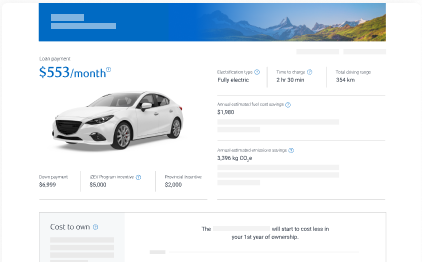Federal electric vehicle rebate programs
Incentives for Zero-Emission Vehicles Program (iZEV)
As of January 12, 2025, the federal government's iZEV program funds have been fully committed. Consequently, the iZEV program has now officially paused.
Visit the iZEV website for more information (opens to external site)What’s a zero-emissions vehicle?
A zero-emission vehicle (ZEV) is one that has the potential to produce no tailpipe emissions. While it can still have a conventional internal combustion engine (ICE), it must be able to operate without using it.
Battery electric vehicle (BEV)
A fully electric vehicle is powered by an electric motor, and is charged by being plugged into an external electric outlet.
Hydrogen fuel cell (FCEV)
A fully electric vehicle that use a hydrogen fuel cell instead of a battery, and is fuelled using hydrogen gas.
Plug-in hybrid electric (PHEV)
Uses both an electric motor and an ICE. The electric motor is powered by a battery, which is charged by being plugged into an external electric outlet. The ICE is powered by a fuel such as gas.

Electric car cost calculator
Calculate the cost to buy and own an EV, and find out how much money you could save.
Calculate nowProvincial electric vehicle rebate programs
Are EV rebates available where you live?
Additional EV rebates are available in certain provinces. Please select your province in the list below to find out.
Electric car financing with RBC
Get special financing rates on select EVs and flexible payment options with the RBC Clean Energy Vehicle Program
Learn more
